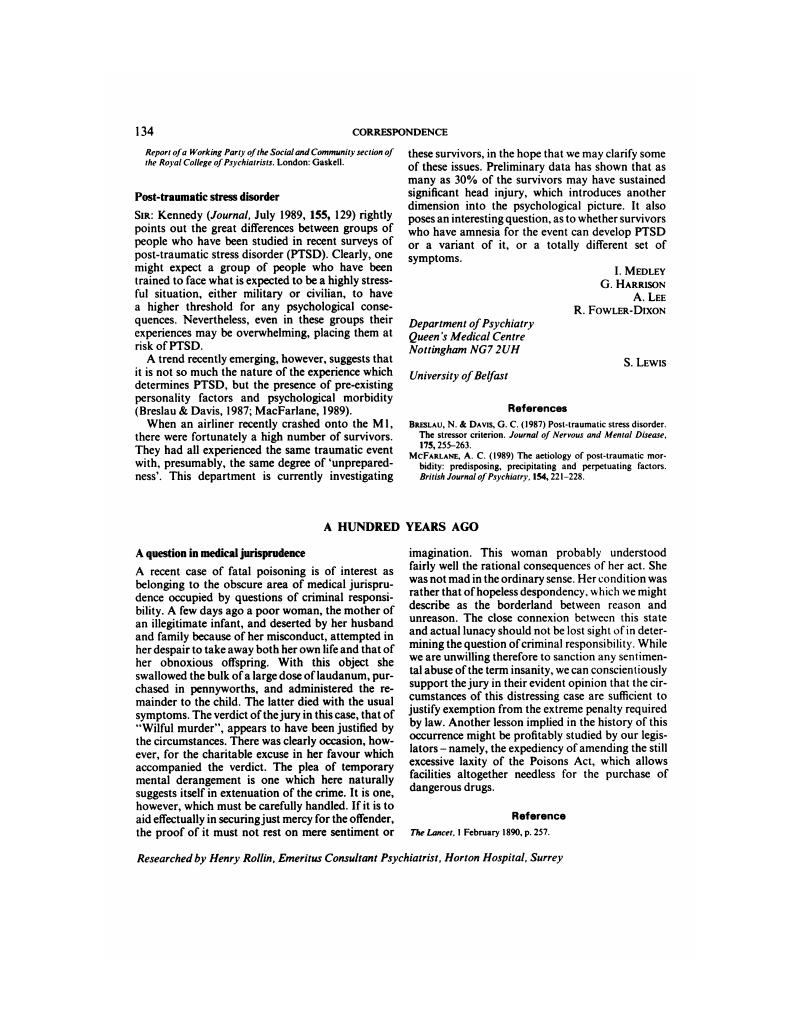No CrossRef data available.
Article contents
Post-traumatic stress disorder
Published online by Cambridge University Press: 02 January 2018
Abstract
An abstract is not available for this content so a preview has been provided. As you have access to this content, a full PDF is available via the ‘Save PDF’ action button.

- Type
- Correspondence
- Information
- Copyright
- Copyright © The Royal College of Psychiatrists
References
Breslau, N. & Davis, G. C. (1987) Post-traumatic stress disorder. The stressor criterion. Journal of Nervous and Mental Disease, 175, 255–263.CrossRefGoogle ScholarPubMed
McFarlane, A. C. (1989) The aetiology of post-traumatic morbidity: predisposing, precipitating and perpetuating factors. British Journal of Psychiatry, 154, 221–228.CrossRefGoogle ScholarPubMed





eLetters
No eLetters have been published for this article.